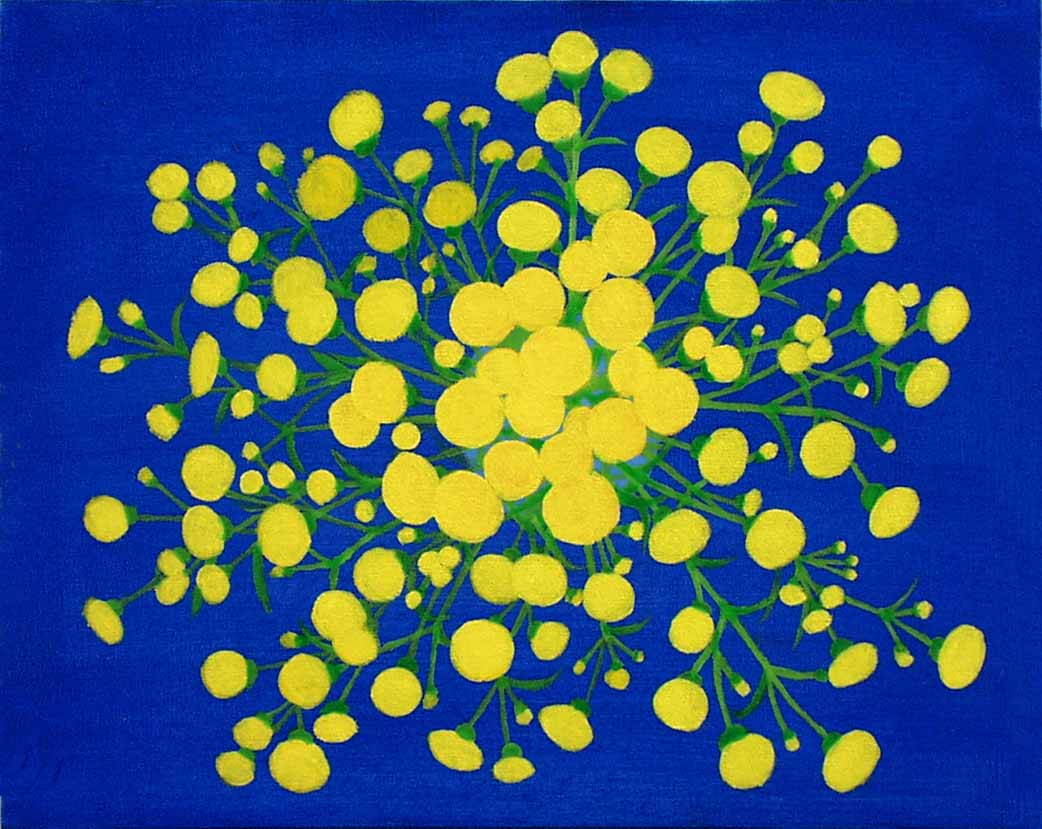
KAZUMASA
di Vittoria Coen
– Italian
Scrivere che in questi lavori di Kazumasa si leggono la fantasia, la levità e lo spirito creativo di una cultura che é, si, nata nel lontano Oriente ma appare singolarmente vicina alle nostre esperienze artistiche in Occidente, potrebbe apparire riduttivo, anche se l’annotazione risponde al vero, potrebbe sembrare una caduta, nell’esotismo o nell’antropologia culturale di maniera e comunque un modo di considerare l’arte estraneo ad essa. Kazumasa si muove liberamente nella singolarità sospesa del soggetto, figurine collocate in difficili situazioni di stasi provvisoria dalle quali potrebbero all’improvviso staccarsi e andare a vivere di vita propria, animate di colpo da quel potenziale di vitalità che si intuiva anche nei loro atteggiamenti meno vicini ad un eventuale lancio. Eppure è proprio questa insularità psicologica delle figure così delicatamente dipinte di azzurro (colore freddo ma allusivo) che le rende capaci di uno sviluppo interiore, di una loro propria attività che del resto, a volte, il titolo suggerisce e conferma, ma che sarebbe già chiaro quand’anche ci si fosse avvicinati all’opera senza averlo prima notato. C’è, a guardare insieme “l’uomo”nei suoi atteggiamenti riflessivi, il germinare e la ricchezza piena, compatta, delle composizioni che si definirebbero più naturalistiche, un armonia concettuale che non nasconde, anzi sembra voler rivelare una non comune certezza di equilibrio delle cose, di sinergie dei fenomeni, di globale simbiosi. Le stelle, così come i fiori colorati con toni forti o pastello , zuccherosi a tratti o decisi nella durezza del materiale di cui sono composti, sembrano fratelli nella rappresentazione. La generale immagine di sospensione in uno spazio mentale dell’opera trova una grande corrispondenza nella personalità dell’artista che guarda il mondo con partecipazione e distacco, lasciandosi cioé una porta aperta per poter esprimere un giudizio sulle cose non troppo vincolato all’emotività.Così si deve pensare che se questi lavori hanno in sé una componente senza dubbio accattivante, la forte simbologia che vi è contenuta dirotta la riflessione da qualsiasi aspetto decorativistico. La libertà, inoltre, di scegliersi la terracotta come materiale, per lo meno nella maggior parte dei casi, suggerisce un senso di vitalità intellettuale in un artista giovane che potrebbe declinare su itinerari ben più freddi adottati da molti della sua generazione. Mentre in alcuni casi le soluzioni cromatiche indulgono meno a variazioni e restano ancorale ad una bicromia molto precisa e dunque significativa, in altri casi il gioco cromatico appare più liberatorio. Nella sfera celeste come in quella terrestre e umana si muovono forze simili, cadono le classificazioni e le categorie. Il cielo stellato non è poi così lontano dall’uomo e le concrezioni fossili non sono poi così disanimate da non poter essere collocate a fianco, e quasi à côté del soggetto umano che può, quindi, al cospetto delle stelle, vivere la sua avventura terrena senza sradicarsi dal comune fondo cosmico. Una sfera è infatti appoggiata sulle ginocchia dell’uomo che a sua volta appoggia su di essa i gomiti nel più naturale gesto del pensatore; è una riflessione che avrà uno sbocco perché sembra contenere la sua chiave in se stessa, non tanto perché la verità sia intellettualisticamente nel pensie ro astratto, ma perché è dalla capacità di vivere la vita delle cose, singole e complesse, che si possono attingere le risposte importanti. Sembra proprio che questa certezza sia perfettamente nella coscienza del modello: comunque esso si atteggi, esprime un saper essere nel mondo.
1997
(in the catalog KAZUMASA)
